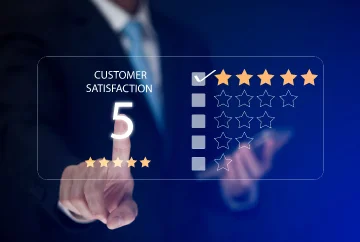There was a stampede to digital selling and service delivery as the pandemic unfolded in 2020. Today most organizations continue their Customer Relationship Management (CRM) transformation - when in fact, what they need is a Customer Experience (CX) transformation. With well-integrated customer experience helping to orchestrate customer engagement activities across the enterprise.
Although there is a strong link between customer experience and the supporting technology, a CRM transformation alone won’t result in more satisfied customers. A unified CX and CRM enhances the service experience, by adapting to constant changing customer, technology, and environmental needs, whilst also focussing on the customers’ persona, user behaviours, and strategic roadmaps. As such, I’ve put together some of the issues that derail CRM transformation initiatives, the drivers of CRM excellence, and how CRM transformation can be executed to deliver a great Customer Experience.
Why do CRM transformation programs fail?
A strong CRM project should result in improved customer satisfaction and loyalty. These are the four key reasons why CRM transformation programs fail today:
1. Siloed solution: CRM solutions are inherently siloed since the focus is, as the name implies, managing customer relationships. These solutions’ primary purpose is gathering data for the company. Customer Experience solutions, on the other hand, are focused on the engagement process from a customer’s perspective, thus the focus in on front-office and back-office systems. When a customer interacts with a business, they expect the organization to know about previous interactions, their intent and be able to quickly provide the information they are looking for. This must happen regardless of whether this interaction takes place through sales, customer service, field service, marketing, or eCommerce and it shouldn’t matter which channel is used (i.e. social, e-mail, phone, web).
2. Low or no user adoption: The need to key in too much data or repeat banal tasks manually results in low user adoption. A good CRM implementation provides the user with a simple, easy-to-use interface alongside intelligent processes. The processes must provide the user with real-time data (i.e. customer 360, automatic deal scoring and predictive resolutions to customer tickets) as opposed to a tool for simply collecting data. The tools must be flexible to allow the key users of a CRM system - sales, customer service, and marketing teams - to customize their own experience and deliver relevant data. This will allow them to complete processes with minimal clicks without the need for IT’s involvement.
Free 30-minute assessment
3. Deploy and forget approach: CRM implementations must take a continuous improvement approach rather than being treated as a one-off project. Continuous improvements must be sought from both the users and end-customers to ensure success.
4. The missing voice of the customer: CRM transformations ultimately aim to provide fantastic user experiences. However, to fulfil this purpose, such transformations need the ability to capture quick feedback from users, and this feedback must be turned into action points by customer success teams.
CRM excellence: The case for customer-centricity
The CRM landscape of solutions is highly competitive with similar features being offered. What differentiates SAP, especially for those customers running SAP ERP on the backend, is their customer-centric focus. SAP Sales and Service Cloud is a tightly integrated set of customer experience solutions which support customers’ end-to-end processes when engaging with Sales, Customer Service or Field Service. This makes SAP one of the best CRM solutions available in the market today.
When compared to other CRM alternatives, SAP Sales and Service Cloud provides a lower TCO, lower operating cost for improvements and reduced resource requirements when connected to a backend SAP system. What’s more, SAP provides the integrations and releases new innovations quarterly. In one case, a client even found additional budget to fund a commerce and marketing transformation with SAP at no additional annual spend after moving from another CRM solution to SAP Sales and Service Cloud. SAP offers a rich ecosystem of technologies that represent significant value-add potential in today's digital markets.
Building the CRM-CX link
SAP Sales and Service Cloud is a solid foundation on top of which enterprises can build a loyal and engaged customer base. SAP Sales and Service Cloud supports businesses with higher customer satisfaction ratings than those working with its alternatives. Time to move beyond CRM transformation - aim for better CX; everything else will follow.
Recommended




